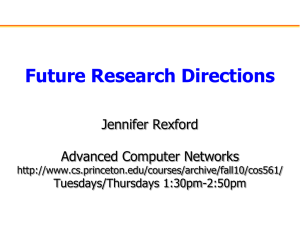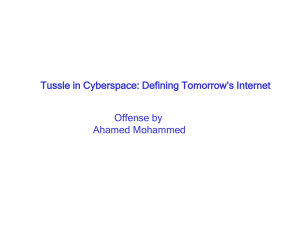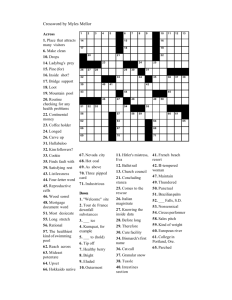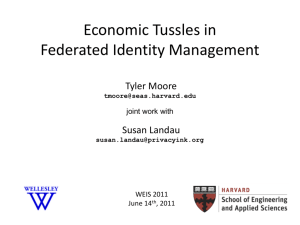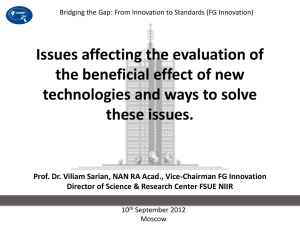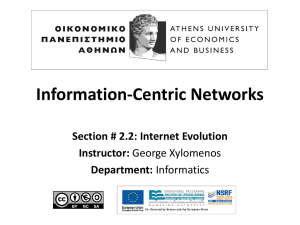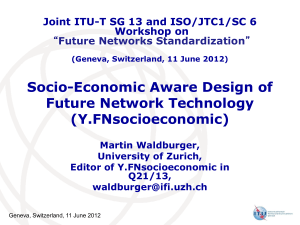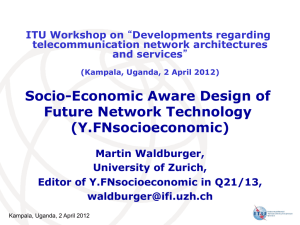Future Research Directions
advertisement
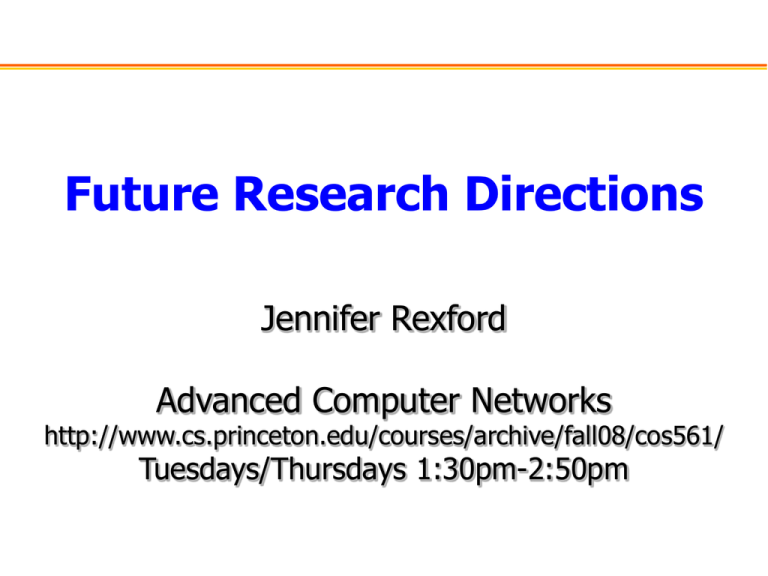
Future Research Directions Jennifer Rexford Advanced Computer Networks http://www.cs.princeton.edu/courses/archive/fall08/cos561/ Tuesdays/Thursdays 1:30pm-2:50pm Tussles in Cyberspace Internet Design Based on Common Goals • Original design of the Internet – “Hook all the computers in the world together so that as yet unknown applications could be invented to run there.” • Today’s reality – “The Internet is not a single happy family of people dedicated to universal packet carriage. There is contention among the players.” Stakeholders With Different Goals • • • • • • Users running applications Commercial providers making money Governments enforcing laws Intellectual property rights holders Malicious parties who want to do harm … Contention (Tussle) Amongst the Parties • • • • • • • Single IP address vs. use of NATs Property rights vs. P2P file sharing Government wiretapping vs. encryption Firewalls vs. tunneling, rerouting, port tricks Robust, efficient routes vs. ISP competition End-host congestion control vs. selfish users … Design for Tussle • Tussle in the Internet takes place at run time – Not primarily at design time (i.e., IETF) • Yet the design affects how tussle plays out – What each component is capable of doing – The boundaries between different components • Designing for tussle – Design for choice, for variation in outcome • Open interfaces; separation of policy and mechanism – Modularize the system along tussle boundaries • Bad: DNS names to name hosts and express trademark • Good: ToS bits separate application from service quality Discussion Research Challenges Research Challenges • Improve system properties of the Internet – Reliability – Security – Managability – Scalability – Performance • Provide new features in the Internet – Mobility and disconnected operation – Interactive applications – Energy efficiency – Innovation inside the network Tension Between Goals • Mobility vs. scalability – Location-independent addressing… – … vs. hierarchical addressing tied to routing • Reliability vs. affordability – Redundancy and avoiding shared risks… – … vs. co-location of nodes and links • Security vs. innovation – Limiting the power of the end system – … vs. programmability for new capabilities • Security vs. privacy – Self-certifying identifiers and attribution – … vs. anonymous communication Areas That Interest Me • Network management – Protocols and monitoring for ease of management • Programmability inside the network – Enabling (rapid) innovation and customization • Network virtualization – Parallel virtual networks and new management apps • Incremental deployability – Backwards compatibility and economic incentives • Rigorous protocol design and analysis – Optimization theory as a way to “derive” protocols • Energy efficiency – Green networks and reducing energy at end hosts Areas That Interest You? • What topics strike you as most important? • What research approaches seem most appropriate? • What are your thoughts on the collection of papers we read and discussed? Conclusions • Tons of scope for interesting research – Intellectually fascinating in its own right – … and many connections to other disciplines – Practically relevant, with chance for real impact • Next and final class – Course project presentations (15 min each) – Thursday January 22 11:30am-1:30pm – Lunch provided!
